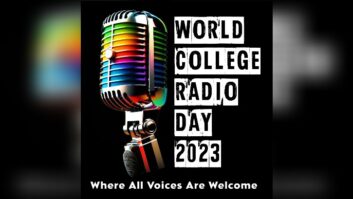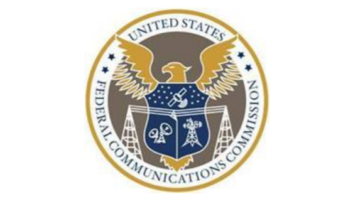The Federal Communications Commission was created in 1934 and thus marked its 75th anniversary this year. This is the last in a series of articles about the commission.
As the final voice in setting down rules and regulations for America’s radio and television stations, the FCC has been responsible for some major changes in the way we do business.
Witness the recent transition to digital-only emissions for full-power television broadcasters. Not only did this require stations to create new digital infrastructures; in many cases they had to purchase new transmitters, antennas and even towers. The majority of stations changed operating frequencies.
This was not the first such major change affecting broadcasters. There was another upheaval, back even before there was commercial television.
At the appointed time — in the wee hours of a spring morning in 1941 ? most U.S. radio stations were ordered to cease operating on frequencies that had been assigned to them as far back as the 1920s, and to move to new locations on the dial. About 90 percent of the nation’s 862 AM stations were issued frequency relocation orders by the FCC.

‘Moving day’ orders were generated by an FCC headed by Chairman James L. Fly. He oversaw commission activities between 1939 and 1944. Other memorable actions during his chairmanship included the raising of FM and television broadcasting from experimental to commercial status. ©The Library of American Broadcasting This “moving day” amounted to the first large-scale project by the commission and had roots that went back to 1938, when the FCC was only four years old. A treaty was signed that year in Havana by representatives of the United States, Canada, Mexico, Cuba, Haiti and Dominican Republic to reapportion North America’s broadcasting channels. This was known as the North American Regional Broadcasting Agreement, or NARBA.
More than 70 years after terms were hammered out in Havana, it’s not entirely clear who made the first move to bring these players together in shuffling AM frequencies, but it’s likely that the state of radio in Mexico was a key factor.
Dr. Brinkley, again
Ever since medical and radio renegade John Brinkley thumbed his nose at the Federal Radio Commission in 1931 and set up shop with the first of the “border blasters” just across the Rio Grande from U.S. soil, Brinkley and others like him had been a thorn in the side of the FRC and its successor, the FCC.
Brinkley and his ilk out-watted most U.S. stations and sometimes even operated between U.S. frequencies. (Brinkley’s XER parked its hundreds of thousands of watts on 735 kHz for a time, tearing holes in the coverage of multiple U.S. and Canadian stations. Brinkley was not alone in such shenanigans; a 1931 issue of Citizen’s Radio Call Book Magazine indicates that other Mexican stations had operated on such oddball channelizations as 547, 632, 857, 923, 962, 965 and 1333 kHz.)
Brinkley’s impotency and prostate cures along with those targeting colonic problems from his wife’s XEAW were enough of an embarrassment to the U.S. government. But when coupled with Norman Baker’s advertisements for charlatan cancer treatments on XENT and scores of preacher creatures hawking religious nostrums and forgiveness for minor and major sins ? all for a love offering ? it had become just too much.
The nighttime ionosphere over North America positively glowed from the skywave energy booming out of the superpower transmitters situated on Mexico’s frontera del Norte ? and just out of reach of the FCC. However, the Mexican government politely refused to take any action, so long as these broadcasting mavericks were prompt in sending their mordida to Mexico City.
The collective intelligence of the U.S. government didn’t back off from its attack on the blaster problem and eventually got the Mexican government’s attention by waving about something that the neighbor to the south didn’t have: cleared broadcasting channels.
This had been a sore spot for some time. Under a previous international agreement, Canada had six clear frequencies and the United States possessed a whopping 40. Washington made it known that this inequity might be addressed if the Mexican government would get on board with the U.S. Department of State and the FCC to reel in the border blasters, and if the Canadians would agree to the necessary frequency swaps, and especially if a large number of U.S. stations could shift dial positions to accommodate the deeding of key frequencies to Mexican stations seeking clear-channel status.
This quid pro quo was sufficient to gain the attention of the Mexican government and in1938, signatories gathered in Havana to ink the deal, shake hands and celebrate over Cuban rum and cigars. Mexico walked away with six promised clear slots; U.S. parties winked collectively and silently bid adieu to Dr. Brinkley and the rest of the radio fringe that populated the banks of the Rio Grande.
Moving notice
That was the easy part.
The next was getting word out to most U.S. broadcasters that it would be necessary for them to give up their accustomed places on the dial and steer their kilocycles elsewhere.
Someone must have put in a lot of long sleepless nights in figuring out the logistics of who would move where in those pre-computer days of the late 1930s. However, it was finally done and this announcement appeared in the FCC’s “Sixth Annual Report” for the fiscal year ending on June 30, 1940:
In conformity with the provisions of the North American Regional Broadcasting Agreement, the Federal Communications Commission on September 11, 1940 filed with the State Department its proposed reallocation of frequencies in the standard broadcast band, to go into effect simultaneously with the pact, on March 20, 1941.
It went on to explain how this was to be accomplished in terms of frequency shuffling and the effects of the change on listeners. It explained that the planned large-scale reassignment of frequencies would make for a better world.
[T]he correlated shifting of the frequencies of some 100 broadcast stations in Canada, and of numerous stations in Mexico and Cuba will serve to eliminate in considerable measure the long-complained of interference from these sources, and thereby improve broadcast reception in the North American generally. Interference from Mexican and Cuban stations has been particularly objectionable to the rural listeners. The Havana pact contains no provision for continued operation of high-powered stations just across the Mexican border. [Author’s emphasis]
The report noted that America’s broadcasters would not have to replace their transmitters, merely swap out their quartz crystals. It went on to state that while this was a small item, “it will take some time to obtain the 2,000 or more crystals from the few manufacturers who grind and calibrate them to order.”
How the FCC arrived at this number is uncertain, but it’s speculated that each shuffled U.S. broadcaster would need a main and backup crystal (approximately 1,550) and the rest would go to stations in Canada, Mexico, Cuba and other island nations affected by NARBA.
This was a lot of quartz to grind by the handful of companies ? including Bliley, Monitor Piezo Products and Valpey Crystal ? that produced radio crystals.
Incidentally, it was reported in the publication Radio and Television Retailing that both the FCC and the NAB were urging broadcasters to swap crystals to ensure “readiness of equipment at the deadline.” Just how broadcasters were to do this in a timely manner is uncertain, as in 1941 there was no FedEx, UPS or USPS Priority Mail.
The FCC’s report failed to address the necessary retuning of the nearly 800 transmitters and antennas on “moving day.”
While most stations had their resident “sparks” on payroll, some had to rely on consulting firms to handle the retuning. In some cases this amounted to no more than moving up 10 or 20 kHz. However, for some the move was much more drastic, with their final homes several hundred kHz away.
There was considerable paperwork too, generating revenue for communications law firms.
Most stations experienced a surge in overtime pay as the date drew near, with dress rehearsals being conducted during experimental hours to make sure everything would go smoothly in the early hours of March 29. Clyde Hunt, CE of Washington station WJSV (later WTOP, now WFED), offered comments in a March 1941 Washington Post article:
“That means that when WJSV signs off for the night, these weeks, we replace the present crystals with the ones we will be using and test during the dead of night. Then, before the station goes back on the air, we have to switch crystals again so Art Godfrey will come in over 1460 and not 1500 kilocycles.”
Rehearse the nation’s stations did, and few slip-ups were reported at sign-on time on March 29, 1941.

Some stations got out the word to listeners via newspaper ads not to look for them in their accustomed dial positions after March 28. News also was spread through on-air announcements, door knob tags and even electric company statements. FCC Chairman James Fly was particularly happy, stating in another Post article:
“The number of channels in the broadcast band has been increased somewhat, and in various ways each channel is to be more intensively used,” he said. “In short there’s going to be more room on the air, and it’s going to be more equitably distributed. For listeners, then, the chief advantage will be better service and less interference.”
Fly couldn’t help making a dig at the Brinkley crowd.
“Bootleg stations are outlawed,” he commented, acknowledging that at least a dozen of the radio renegades “have been in operation along our borders using ‘superpower’ and aiming their signal directly at this country through the use of directional antennas. Thus the stability of our whole broadcasting system seemed threatened …”
‘The chance of a lifetime’
Another crowd ? a very large one ? was rubbing its hands with glee, but not particularly over the demise of the Brinkleyesque broadcasters.
These were the nation’s radio servicemen, who stood to profit greatly on “moving day” due to the large number of push button-equipped radios that would need to be reset so that John and Jane Doe could find their big band, drama, comedy and soap broadcasts. (It wasn’t just the present generation of Americans who had trouble resetting digital clocks and the like. A lack of technical savvy existed in the 1940s too.)
Radio and Television Retailing, which was a serviceman’s publication, noted that some 10 million push button radios were in the hands of consumers and that “the public will thus at least require advice and, in many cases, the services of experienced radiomen.”
It reported that while the average charge for push button resetting was $1, the Philadelphia Radio Service Men’s Association advocated $2 and in New York City it was pegged at $1.50 for jobs done in the home and $1 for sets brought to the shop. (A 1941 dollar had the buying power of about $14.50 today.)
It was speculated that if a serviceman didn’t have his pockets stuffed full of cash at quitting time on March 29, something was very wrong.
Radio tube manufacturer Sylvania, in an ad in the March 1941 issue of the magazine, put it in words that anyone could understand: “March 29 brings ? the Chance of a Lifetime to Servicemen.” The company offered “door knob hangers” and other promotional material to help servicemen spread the word about the impending frequency change.
RCA went further by preparing a special “Moving Day” kit for dealers that included an advertising proof sheet for placement in local newspapers and a transcription with spot announcements to be aired over local stations. Both offered the suggestion that while servicemen were changing out the push button settings, this would be an ideal time for them to check and replace any weak tubes (with genuine RCA bottles, of course) to ensure that the customer’s radio would continue to operate at peak performance.
Was it all ‘sweetness and light’?
Aside from the small percentage of listeners who somehow didn’t get the word, the massive change in radio facilities went reasonably well.
The FCC’s “Seventh Annual Report” for 1941 reported that “the change was accomplished smoothly due to the cooperation of station licensees, equipment manufacturers and consulting engineers in making prior adjustments to transmitters and antenna systems.”
Interestingly, the 1941 report observed that “802 of the 893 standard broadcasting stations then authorized in the United States changed frequencies.” (This is variance with the FCC’s 1940 figure of 777 of 862 stations being relocated.)
The report did observe that some stations were not able to make the frequency hop on schedule.
“In some instances, stations with directional antennas were not able to make readjustments by March 29 and were permitted to operate at night with reduced power pending readjustment. In some cases where stations were assigned a channel requiring new or different directional antenna they were enabled to operate with limited power until they could make the necessary installation.”
One of these was Birmingham’s CBS affiliate, WAPI, which had been operating on 1140. A CBS ad in Radio and Television Retailing noted that the station might be relocating to 1170 “for some time after March 29” before moving to 1070.

Fallout from the frequency shift affected another U.S. sector: the radio serviceman. An estimated 10 million sets with push buttons needed resetting, offering an unprecedented opportunity to cash in. (The majority of radio owners were not about to tweak oscillator and RF stage trimmers to bring in the new frequencies.) Courtesy Public Library of Charlotte & Mecklenburg County (N.C.) KFAB in Lincoln, Neb., also was listed as a problematic station. Its pre-move frequency was 770 kHz and its new spot should have been 1110, but it was noted that it might be spending some time parked at 780 before this was possible. (It is assumed that the station would continue to operate synchronously with Chicago’s WBBM as it had for some years, since WBBM was also shifting to 780 on moving day.)
Another exception was San Jose, Calif., station KQW, which operated on 1010 before the big switch. It should have moved directly to 740, but for a number of reasons this didn’t happen until 1947.
Perhaps the biggest fly in the ointment was the relocation of Albuquerque’s KOB. The 1941 resettlement spawned possibly the longest-running bit of litigation in radio history.
Prior to NARBA, KOB had been operating on 1180 kHz with 10 kW. In 1940 it received the commission’s blessings to run 50 kW on that frequency and officially was designated as a Class I clear-channel station, meaning that it was the only operation in the country on 1180 at night.
The NARBA required KOB to vacate 1180 and the commission initially parked it on 1030 kHz. This didn’t sit well with the owners of Boston’s WBZ, which also operated on that frequency, and they argued that the new interloper was severely damaging their nighttime coverage to the west. (WBZ was a Class I-A clear.)
The FCC then on a temporary basis ? until a more suitable spot could be found ? parked KOB on 770.
This is where the situation began to worsen.
New York’s WJZ (now WABC) was the flagship of the Blue (later the ABC) network and was also assigned to operate on 770. The station’s owners would argue that to put someone else on its cleared nighttime frequency amounted to discrimination, as neither of the other two major network NYC flagship stations had to share frequencies (CBS and NBC).
However, just a few months later, and before any real solution could be provided, the United States found itself in a world war. The FCC had many other priorities and KOB continued to operate on 770 throughout the war years via a “special service authorization,” the equivalent of today’s STA.
The legal skirmish over nighttime supremacy on 770 kHz involved a generation of lawyers before finally being settled in WABC’s favor.
Fallout
Although the original NARBA treaty has been superseded by a more recent agreement, it did give the nascent FCC its first opportunity to flex its regulatory muscles in a big way some 70 years ago, and permanently affected most North American AM stations.
It also created several legacies, including the rather special 660, 770, 880 channelization in NYC. (Somehow the 1960s and ’70s “Sev-en-ty-se-ven, W-A-B-C” jingles just wouldn’t have had their alliterative magic if they’d reflected the station’s pre-move frequency of 760 kHz.)
The move also created a mystery that has puzzled more than one later-generation station engineer —namely, why a station’s transmitting antenna is electrically longer than it really needs to be.
James O’Neal is technology editor for TV Technology and a frequent Radio World contributor. For more radio history, click on Roots of Radio under Columns atradioworld.com.
Comment on this or any story. Write to[email protected].
Related:
“When the Federal Government Stepped In” (June 2009)












